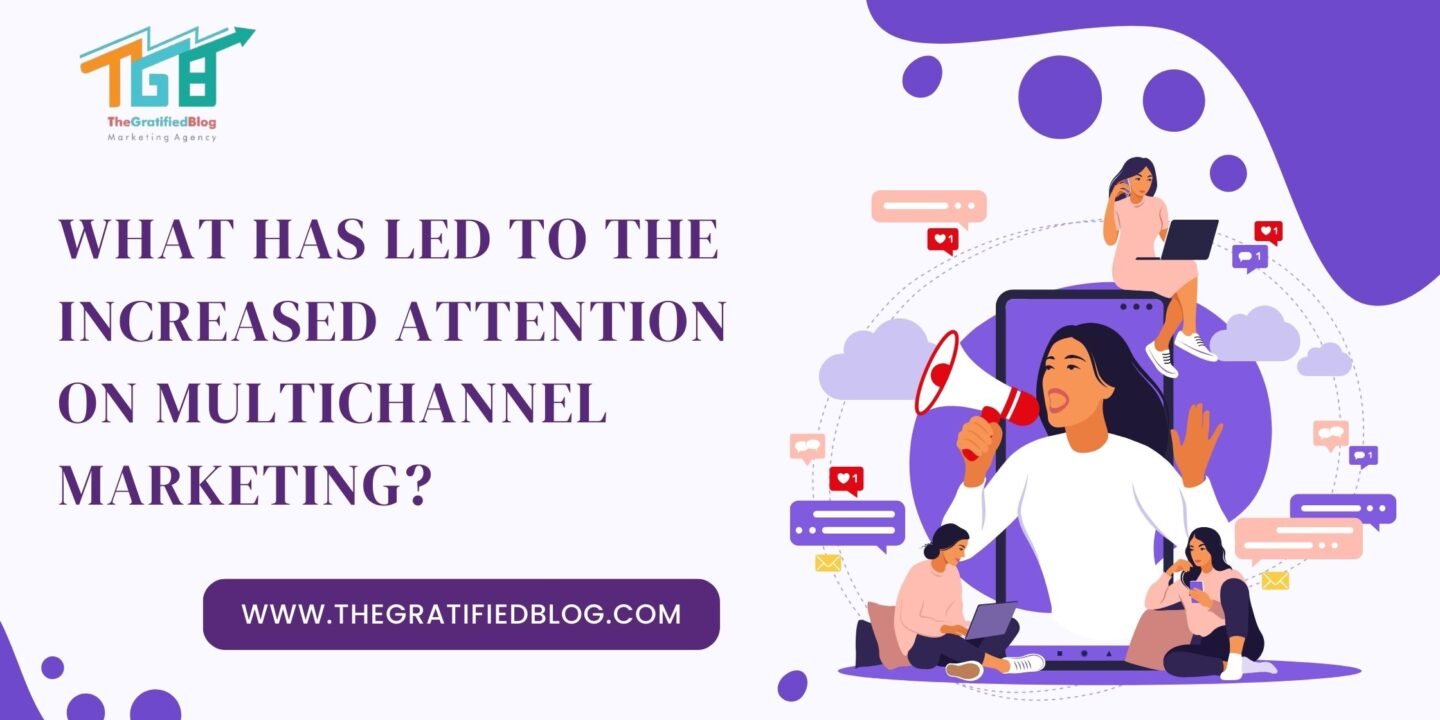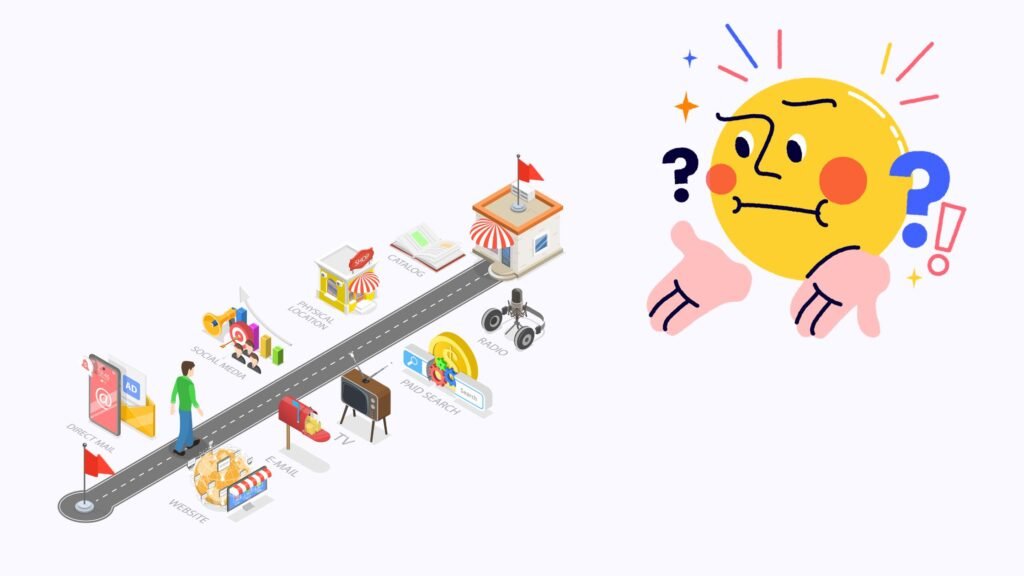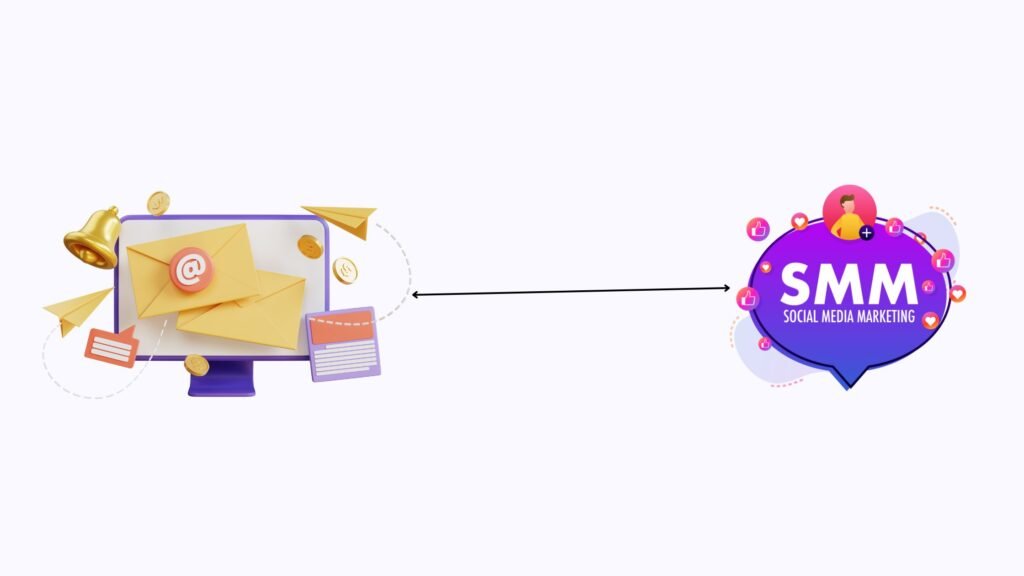
In an ever-evolving digital landscape, businesses constantly discover novel and innovative methods to engage with their target audience. One such approach that has been gaining substantial attention in recent years is multichannel marketing. Multichannel marketing, also known as omnichannel marketing, engages with customers across various channels and touchpoints to create a seamless and integrated brand experience. But what has led to the increased attention on multichannel marketing? This blog post will delve into the factors driving this phenomenon.
What Is Multichannel Marketing?

Multichannel marketing is a marketing strategy and approach that involves engaging with and reaching out to customers through various communication channels and touchpoints to create a cohesive and integrated brand experience. Multichannel marketing ensures that a brand’s message is consistently delivered across different platforms and mediums to the target audience. This approach recognizes that consumers today use multiple channels to interact with businesses and make purchasing decisions, and it seeks to meet them where they are.
What Has Led To The Increased Attention On Multichannel Marketing? (Key Factors)
The increased attention to multichannel marketing can be attributed to several key factors that have reshaped the marketing landscape and how businesses engage with customers. Here are the primary drivers behind the growing focus on multichannel marketing:
- Changing Consumer Behavior: Modern consumers are highly dynamic in their behavior. They use various devices and platforms to access information, purchase, and engage with brands. Businesses must adapt to this behavior by being present where their customers are, thus necessitating a multichannel approach.
- Rising Digital Dominance: The rapid digitalization of the business world has made online and digital channels integral to marketing. From e-commerce websites to social media platforms and email marketing, digital channels are the go-to platforms for reaching and engaging customers.
- Mobile Device Proliferation: The widespread adoption of smartphones has revolutionized how people access information and interact with brands. Mobile channels, such as mobile apps and mobile-optimized websites, are essential for multichannel marketing to cater to a mobile-savvy audience.
- Increased Competition: In today’s global marketplace, competition is fierce. To stand out and capture the attention of potential customers, businesses need to explore new and innovative ways to reach their target audience, which multichannel marketing facilitates.
- Data-Driven Insights: Data analytics and technology advances have enabled businesses to collect and analyze customer data. Multichannel marketing relies on this data to understand customer behavior, preferences, and interactions across channels, allowing for more targeted and personalized marketing strategies.
- Social Media Supremacy: Social media channels have evolved into powerful tools for content consumption and brand interaction. Businesses recognize the importance of maintaining a solid presence on social media to foster engagement and build brand loyalty.
- Evolving Customer Expectations: In a world where Amazon can deliver products within hours, customers have grown accustomed to efficient and seamless experiences. Multichannel marketing aims to provide a unified customer journey that meets these high expectations.
- Cost-Effective ROI: Despite the initial setup costs, multichannel marketing has proven cost-effective in the long run. When executed effectively, it can boost customer engagement, increase conversion rates, and optimize the return on investment.
- Data Security and Privacy Concerns: In light of growing concerns about data security and privacy, multichannel marketing is equipped to handle customer data responsibly, fostering trust and transparency with consumers.
- Technological Advancements: As technology evolves, new tools and platforms are introduced, offering more sophisticated ways to engage customers across different channels. Marketers are drawn to these innovative technologies to enhance their multichannel marketing efforts.
Which Is One Of The Most Popular Multi-Channel Marketing Pairings?

One of the most popular and effective multi-channel marketing pairings combines email and social media marketing. This pairing leverages the strengths of both channels to connect with and captivate a broader audience and build stronger customer relationships. Here’s why this combination is trendy:
- Email Marketing: Email marketing is a straightforward and highly targeted channel. It allows businesses to send personalized messages, promotions, and content to subscribers’ inboxes. Email is often used to nurture leads, deliver transactional messages, and build long-term relationships.
- Social Media Marketing: Platforms such as Facebook, Twitter, Instagram, and LinkedIn are ideal for crafting and sharing compelling content, engaging with followers, and increasing brand visibility. Social media is particularly effective for building a community and fostering engagement.
When These Two Channels Are Paired Together, Several Advantages Emerge:
- Cross-Promotion: You can use email to encourage subscribers to follow your social media profiles and vice versa. This cross-promotion helps you grow your audience on both channels.
- Content Distribution: Share your email content on social media to increase its reach. This can include blog posts, newsletters, special offers, and more. This extends the lifespan of your content and can attract new subscribers or followers.
- Consistency: Maintaining a consistent message across email and social media reinforces your brand identity. Customers who receive consistent messaging across both channels are more prone to identify, trust, and interact with your brand.
- Targeting and Personalization: Email marketing allows for highly targeted and personalized messaging, while social media can offer insights into customers’ behavior and preferences. Combining data from both channels can create more precise customer segments and deliver tailored content.
- Customer Engagement: Social media encourages real-time engagement, enabling you to foster a sense of community and provide immediate customer support. When integrated with email marketing, you can deepen customer relationships by offering multiple channels for interaction.
- Remarketing: If someone interacts with your brand on social media but needs to complete a desired action (e.g., purchasing), you can use email marketing to send follow-up messages or reminders. This remarketing can help convert potential customers.
- Analytics and Insights: Combining email marketing and social media data can provide a more comprehensive view of customer behavior and campaign performance. You can use these insights to refine your strategies and optimize your marketing efforts.
The Step-By-Step Process Of Creating A Multichannel Marketing Strategy
Creating a successful multichannel marketing strategy involves a step-by-step process to ensure that all aspects are well-planned and coordinated. Here’s a comprehensive guide to developing a multichannel marketing strategy:
- Market Research and Customer Analysis:
- Perform comprehensive market research to gain insights into your industry, competitors, and market trends.
- Analyze your target audience to create detailed customer personas. Understand their needs, preferences, and behaviors.
- Set Clear Objectives:
- Define specific, measurable, achievable, relevant, and time-bound (SMART) marketing objectives. For example, increasing website traffic by 20% in six months
- Choose Appropriate Channels:
- Choose the marketing channels that align with your audience’s preferences and business goals. Common channels include:
- Email marketing
- Social media marketing
- Content marketing (blogs, videos, etc.)
- Paid advertising (Google Ads, social media ads, etc.)
- Mobile marketing (apps, SMS, etc.)
- Search engine optimization (SEO)
- Influencer marketing
- Affiliate marketing
- Offline marketing (print, events, etc.)
- Choose the marketing channels that align with your audience’s preferences and business goals. Common channels include:
- Segment Your Audience:
- Divide your audience into segments according to demographic factors, interests, and behavior. This segmentation will allow for more personalized marketing.
- Create a Content Plan:
- Develop a content plan outlining the content type you’ll create for each channel. This plan should align with your objectives and audience segments.
- Consistent Branding:
- Maintain a consistent brand image, voice, and values across all channels. Ensure your branding is recognizable and coherent.
- Integration of Data and Technology:
- Invest in tools and technology to collect, analyze, and manage customer data. This involves the utilization of customer relationship management (CRM) systems.
- Content Creation:
- Develop high-quality, relevant content for each channel. Adapt the content to suit the platform and purpose, whether blog posts, videos, ads, or social media updates.
- Personalization:
- Utilize customer data to generate personalized content and offers. Tailor messages to specific customer segments to increase relevance.
- Cross-Promotion:
- Promote your various marketing channels within each other. For instance, encourage email subscribers to follow your social media profiles and vice versa.
- Testing and Optimization:
- Regularly test different strategies, messaging, and content across various channels. Evaluate the effectiveness of each channel and modify your strategy accordingly.
FAQs
Q1. What Is An Example Of A Multi-Channel Marketing Strategy?
A. An example of a multichannel marketing strategy is a retail company combining online marketing (email, social media, and pay-per-click advertising) with in-store promotions, mobile app notifications, and a loyalty program to engage with customers across various platforms and drive sales online and in physical stores.
Q2. What Is Multi-Channel Vs. Omnichannel Marketing?
A. Multichannel marketing involves using multiple marketing channels to reach customers, but they may need integration. Omnichannel marketing seamlessly integrates these channels to provide a unified and consistent customer experience across all touchpoints.
Q3. What Are Some Common Marketing Channels Used In Multichannel Marketing?
A. Common channels include email marketing, social media, content marketing, paid advertising, mobile apps, search engine optimization (SEO), influencer marketing, and more.
Conclusion
So, what has led to the increased attention on multichannel marketing? The increased attention to multichannel marketing Can be ascribed to a convergence of factors that have fundamentally reshaped the marketing landscape. The changing consumer landscape, digital competition, mobile prevalence, data-driven insights, social media’s impact, heightened expectations, cost-effective ROI, data privacy, and technological advances.
We’d love to hear your insights and experiences on this topic. Share your thoughts in the comments below and join the conversation on the evolving world of multichannel marketing.








No Comments